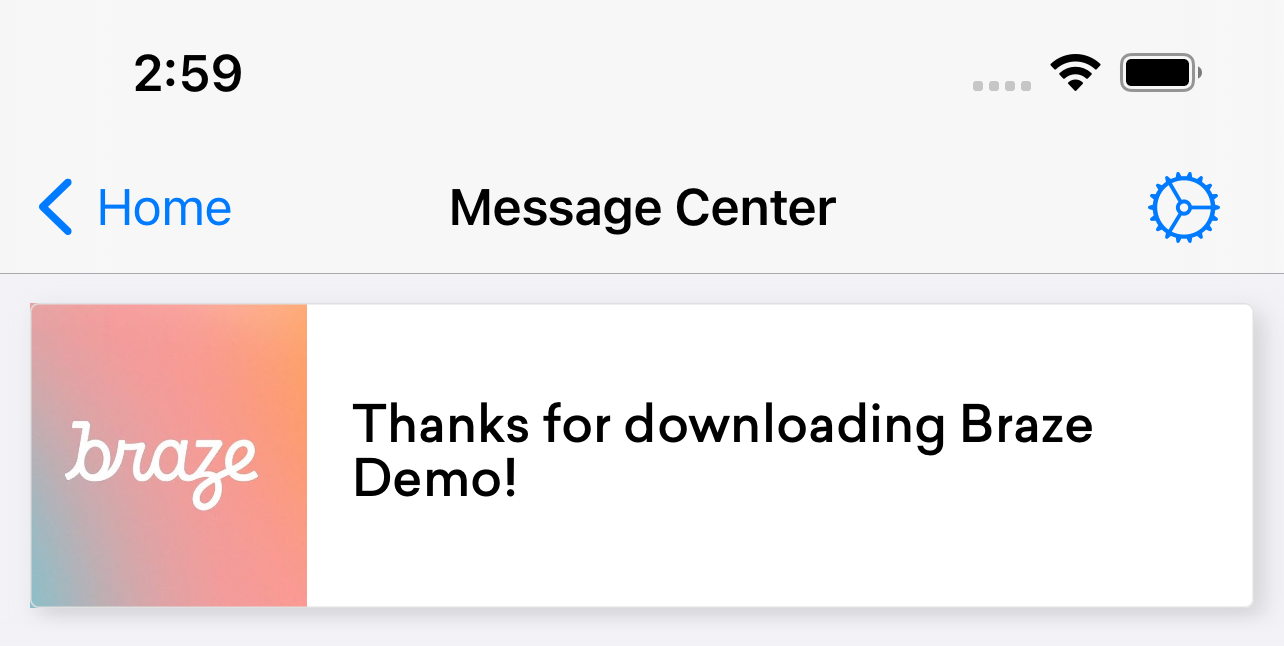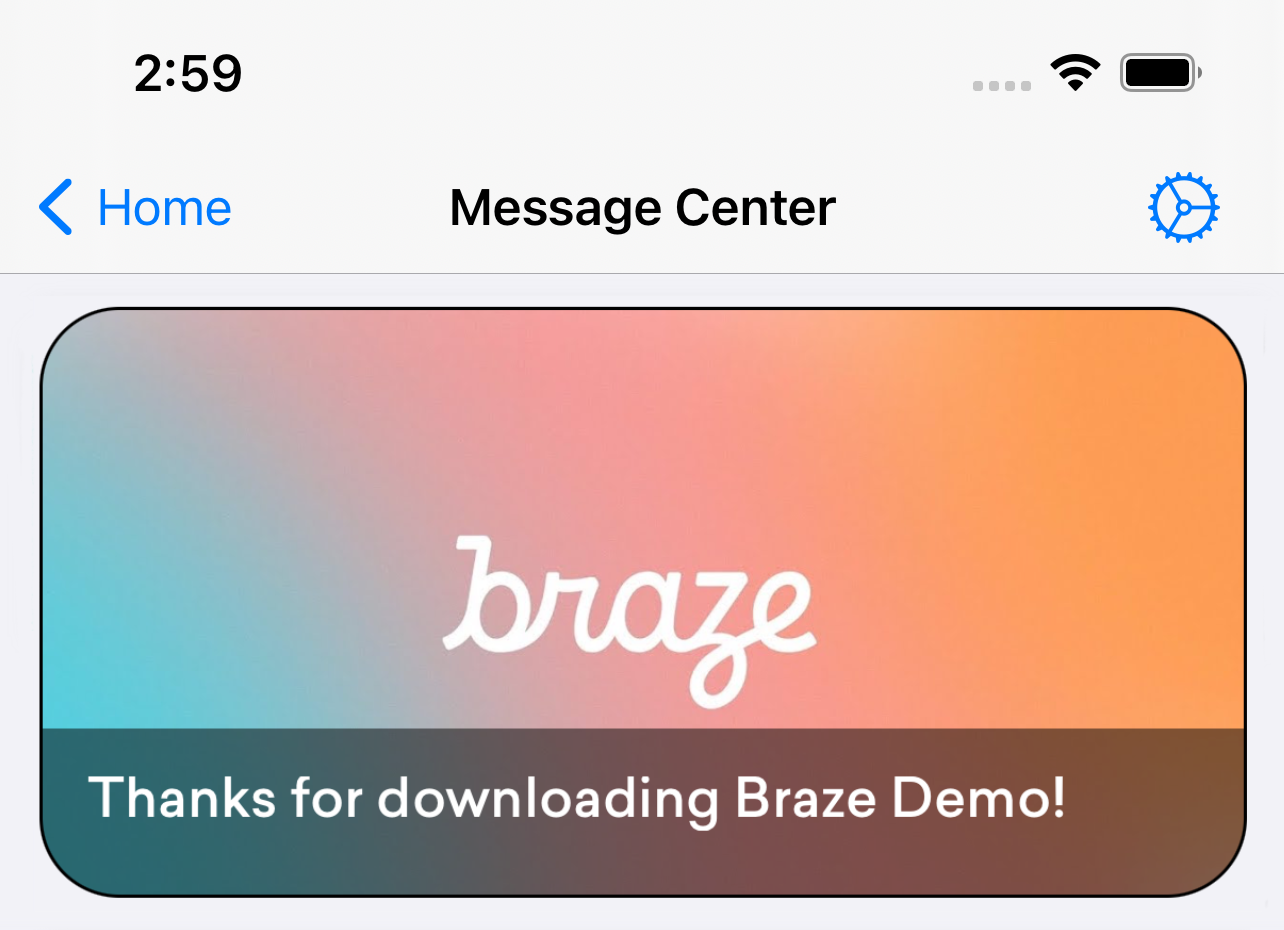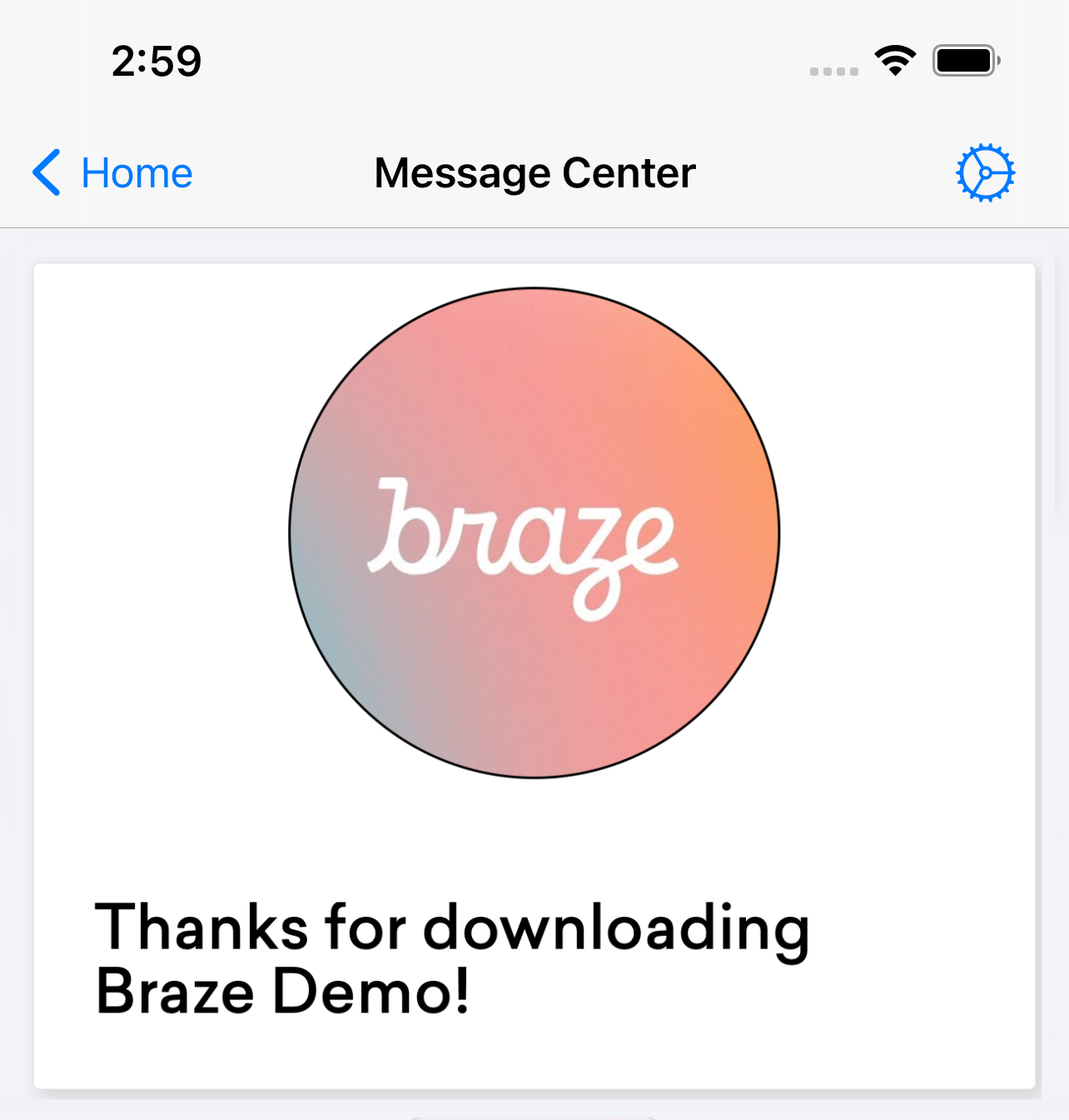This page references our older Objective-C SDK. Check out our new Swift SDK to integrate our latest Swift-first library.
Customizing the Content Cards feed
You can create your own Content Cards interface by extending ABKContentCardsTableViewController to customize all UI elements and Content Cards behavior. The Content Card cells may also be subclassed and then used programmatically or by introducing a custom storyboard that registers the new classes. Check out the Content Cards sample app for a complete example.
It’s also important to consider whether you should use a subclassing strategy versus a completely custom view controller and subscribe for data updates. For example, if you subclass the ABKContentCardsTableViewController, you can use the populateContentCards method to filter and order cards (recommended). However, if you use a complete view controller customization, you have more control over the card behavior—such as displaying in a carousel or adding interactive elements—but you then have to rely on an observer to implement ordering and filtering logic. You must also implement the respective analytics methods to ensure impressions, dismissal events, and clicks are properly logged.
Customizing UI
The following code snippets show how to style and change Content Cards to fit your UI needs using methods provided by the SDK. These methods allow you to customize all aspects of the Content Card UI, including custom fonts, customized color components, customized text, and more.
There exist two distinct ways to customize Content Card UI:
- Dynamic method: update card UI on a per-card basis
- Static method: update the UI across all cards
Dynamic UI
The Content Card applyCard method can reference the card object and pass it key-value pairs that will be used to update the UI:
1
2
3
4
5
6
7
8
9
10
11
12
13
14
- (void)applyCard:(ABKCaptionedImageContentCard *)captionedImageCard {
[super applyCard:captionedImageCard];
if ([card.extras objectForKey:ContentCardKeyBackgroundColorValue]) {
NSString *backgroundColor = [card.extras objectForKey:ContentCardKeyBackgroundColor];
if ([backgroundColor colorValue]) {
self.rootView.backgroundColor = [backgroundColor colorValue];
} else {
self.rootView.backgroundColor = [UIColor lightGray];
}
} else {
self.rootView.backgroundColor = [UIColor lightGray];
}
}
1
2
3
4
5
6
7
8
9
10
override func apply(_ captionedImageCard: ABKCaptionedImageContentCard!) {
super.apply(captionedImageCard)
if let backgroundColor = card.extras?[ContentCardKey.backgroundColor.rawValue] as? String,
let backgroundColorValue = backgroundColor.colorValue() {
rootView.backgroundColor = backgroundColorValue
} else {
rootView.backgroundColor = .lightGray
}
}
Static UI
The setUpUI method can assign values to the static Content Card components across all cards:
1
2
3
4
5
6
7
8
9
10
11
#import "CustomClassicContentCardCell.h"
@implementation CustomClassicContentCardCell
- (void)setUpUI {
[super setUpUI];
self.rootView.backgroundColor = [UIColor lightGrayColor];
self.rootView.layer.borderColor = [UIColor purpleColor].CGColor;
self.unviewedLineView.backgroundColor = [UIColor redColor];
self.titleLabel.font = [UIFont italicSystemFontOfSize:20];
}
1
2
3
4
5
6
7
8
override func setUpUI() {
super.setUpUI()
rootView.backgroundColor = .lightGray
rootView.layer.borderColor = UIColor.purple.cgColor
unviewedLineViewColor = .red
titleLabel.font = .italicSystemFont(ofSize: 20)
}
Providing custom interfaces
Custom interfaces can be provided by registering custom classes for each desired card type.



Braze provides three Content Card templates (banner, captioned image, and classic). Alternatively, if you want to provide your own custom interfaces, reference the following code snippets:
1
2
3
4
5
6
7
- (void)registerTableViewCellClasses {
[super registerTableViewCellClasses];
// Replace the default class registrations with custom classes for these two types of cards
[self.tableView registerClass:[CustomCaptionedImageContentCardCell class] forCellReuseIdentifier:@"ABKCaptionedImageContentCardCell"];
[self.tableView registerClass:[CustomClassicContentCardCell class] forCellReuseIdentifier:@"ABKClassicCardCell"];
}
1
2
3
4
5
6
7
8
9
override func registerTableViewCellClasses() {
super.registerTableViewCellClasses()
// Replace the default class registrations with custom classes
tableView.register(CustomCaptionedImageContentCardCell.self, forCellReuseIdentifier: "ABKCaptionedImageContentCardCell")
tableView.register(CustomBannerContentCardCell.self, forCellReuseIdentifier: "ABKBannerContentCardCell")
tableView.register(CustomClassicImageContentCardCell.self, forCellReuseIdentifier: "ABKClassicImageCardCell")
tableView.register(CustomClassicContentCardCell.self, forCellReuseIdentifier: "ABKClassicCardCell")
}
Overriding populated Content Cards
Content Cards can be changed programmatically using the populateContentCards method:
1
2
3
4
5
6
7
8
9
10
- (void)populateContentCards {
NSMutableArray<ABKContentCard *> *cards = [NSMutableArray arrayWithArray:[Appboy.sharedInstance.contentCardsController getContentCards]];
for (ABKContentCard *card in cards) {
// Replaces the card description for all Classic Content Cards
if ([card isKindOfClass:[ABKClassicContentCard class]]) {
((ABKClassicContentCard *)card).cardDescription = @"Custom Feed Override title [classic cards only]!";
}
}
super.cards = cards;
}
1
2
3
4
5
6
7
8
9
10
override func populateContentCards() {
guard let cards = Appboy.sharedInstance()?.contentCardsController.contentCards else { return }
for card in cards {
// Replaces the card description for all Classic Content Cards
if let classicCard = card as? ABKClassicContentCard {
classicCard.cardDescription = "Custom Feed Override title [classic cards only]!"
}
}
super.cards = (cards as NSArray).mutableCopy() as? NSMutableArray
}
 Edit this page on GitHub
Edit this page on GitHub